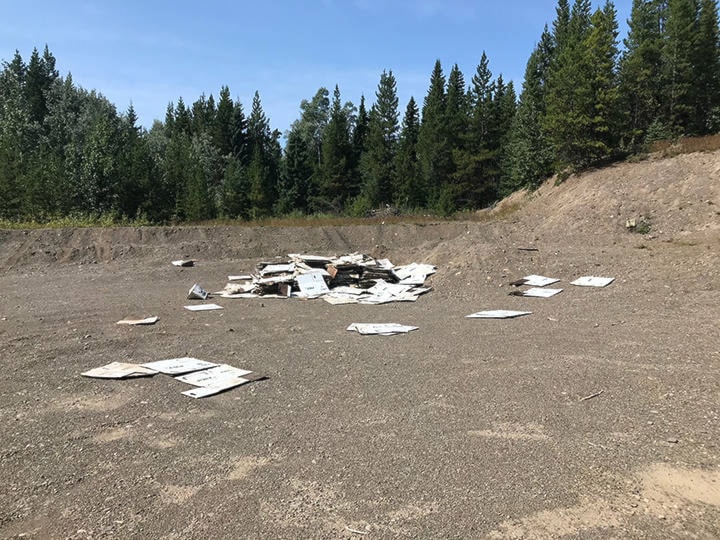A large buildup of cardboard boxes, originally used for tree planting, can be seen in a gravel pit on the North Road.
This summer, approximately 300 million trees were planted across the province of B.C. and over 35 million of them were planted in the Burns Lake Forest District according to the Ministry of Forests.
The importance of tree planting for the logging industry, as well as the environmental impact is well known, but for all the positives that come from tree planting, there are also a few drawbacks.
The pile of boxes in the gravel pit on the North Road is just a small sample of the amount of cardboard that gets stored in the woods after tree-planting season.
Lakes District News spoke to Lasse Lutick, co-owner of tree planting company Hybrid17 Contracting LTD. Lutick mentioned that storing the boxes in gravel pits are a common occurrence.
“Those boxes located on the North Road are not from Hybrid17, as we never planted or camped on the north road, but that isn’t to say we don’t have any out there,” Lutick said. “We prearrange areas with clients that are safe to store boxes until the fall- usually a gravel pit. That means breaking them down, stacking them neatly, and weighing them down so they don’t blow about.”
According to Lutick, depending on the size and species of the tree anywhere from 270-1500 seedlings fit into one box, meaning the 30 million trees planted could potentially produce over 100,000 cardboard boxes.
Lutick went on to say that the boxes are burned in the fall, similar to the slash piles that are burned on logging blocks. “Sadly, they are not able to be recycled as they have a wax coating to make them weatherproof.” He told Lakes District News. Lutick did mention that he tries to repurpose as many boxes as possible for things such as fire starter and storage boxes. They’re also given to planters for various projects.
The amount of boxes that to get recycled though, is a small percentage of the whole.
“At one point decades ago we did try to re-use boxes, sending boxes back to the nursery to reuse them, but the program was a failure – by the time the boxes were sent back to us for the second time they were not stable enough to stack or move, harming the seedlings in the process of getting them to the areas needing planting.” said Lutick.
Lakes District News also spoke to the head supervisor of Watershed Ventures Shaemus Hughes, who reiterated that there is little that can be done with the left over boxes. “There is currently nowhere for us to dispose of the boxes because no recycling centre will take them and the dump won’t either because of their wax coating. We just burn them in the fall when the first snow falls. We dispose of the plastic and wrappers at the dump,” said Hughes.
Lakes District News asked Ministry of Forests representative Tyler Hooper about whether or not there was a better way to recycle the boxes. He said the design of the boxes makes it difficult. “The main issue with recycling boxes is the wax coating that is on them to keep the trees fresh, they are somewhat waterproof and strengthened through this wax. Unfortunately the waxed boxes can not be recycled in regular paper recycling plants. Reusing the boxes has been tried with variable success but rough handling and logistics of getting boxes back to tree nurseries is challenging and not very reliable, and of course these options were stopped this year due to covid.”
Hooper did mention however that in Williams Lake the boxes are collected, shredded, and used as fuel to generate electricity at the Atlantic Power Co-Gen plant.
